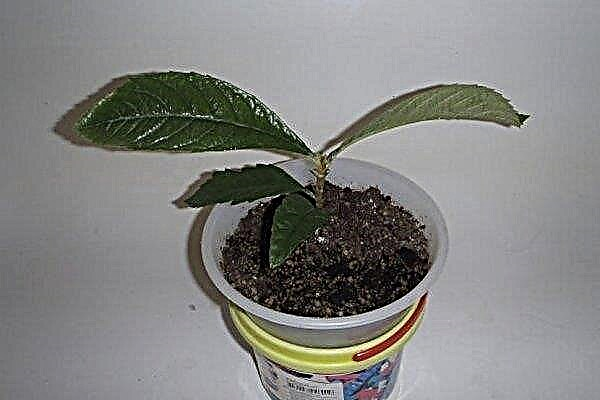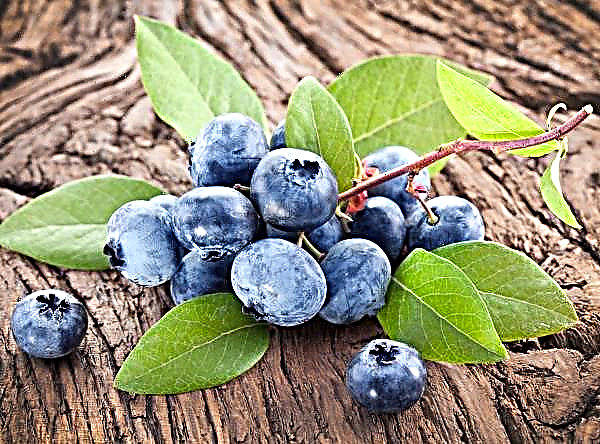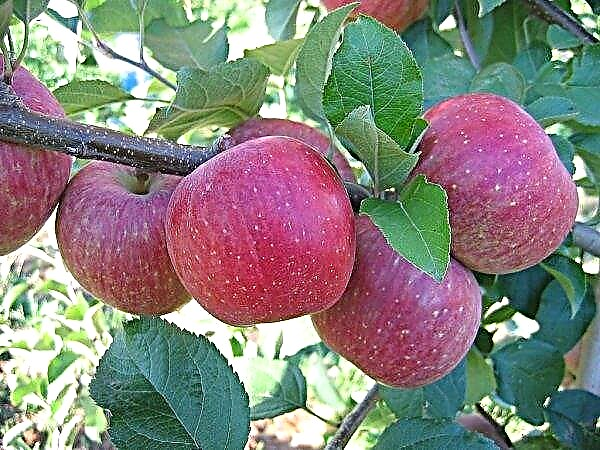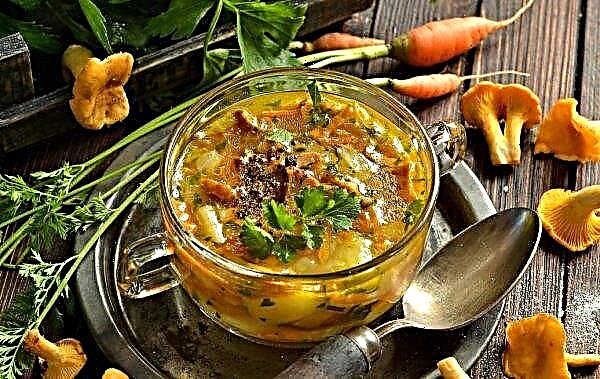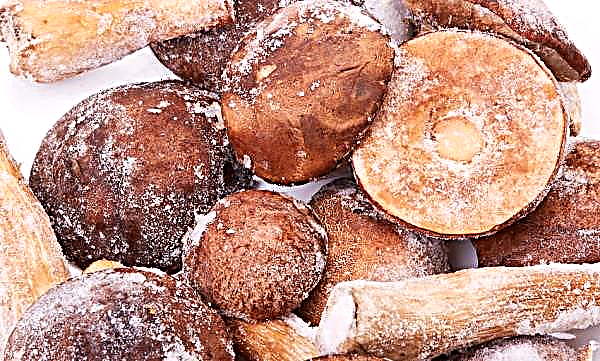Many gardeners are engaged in the cultivation of the Golden Königsberg tomato, primarily because of its unique taste and widespread use. This variety is in demand among gourmets and is therefore very popular. Deal with the intricacies of planting, make all the necessary preparations for the care of this variety of tomatoes will help this review article.
Description and characteristics of the variety
Tomato variety "Golden Koenigsberg" has the following characteristics:
- its bushes reach a height of up to 1.5 m in open soil and about 1.8 m in a greenhouse;
- the variety belongs to indeterminate species and is not limited in growth, therefore, it is necessary to control the height of the stems independently;
Did you know? This variety is not registered in the State Register of Breeding Achievements. It is believed that this is one of the types of tomato patented by breeder V.N.Dederko "tojönigsberg».
- the tops are distinguished by thin stems and leaves, so the bushes need to be tied;
- fruits with a dense structure;
- the color of tomatoes is bright, yellow-orange;
- oblong tomato shape;
- the average weight of the fetus is 300 g, however, individual specimens can weigh from 200 to 400 g;
- sweet rich taste, which allows you to cook from it beloved by many tomato jam;
- productivity has average indicators: 30-40 kg per 1 square. m
Tomato of domestic origin. Created presumably in Novosibirsk.

Pros and cons of the variety
- The positive properties of the variety include:
- great taste;
- widespread use;
- lack of weather reference when forming the ovary.
- Among the disadvantages are the following:
- the need to tie up the bush immediately after planting and make sure that the stems do not bend or break;
- high probability of vertex rot infection;
- slightly lower productivity than other species of the variety.
Features of growing varieties
Successful cultivation consists in creating an optimal microclimate, proper sowing of seeds and planting seedlings. Golden Koenigsberg needs to be grown with some features in mind.

Optimal conditions
The optimum temperature for the germination period of sowing is considered an indicator of + 25 ° C. Seedlings need cooler air (about + 20 ° C). Lighting is also necessary. If there is not enough daylight, then additionally use lamps. There is no need for round-the-clock lighting, the duration of daylight hours for seedlings should be 14-16 hours.
There are no special requirements for the level of moisture in the air, normal room humidity of 60-80% is suitable.Important! Incandescent lamps are undesirable, since they significantly increase the temperature level.
Features of sowing seeds
If you use your own seed, it must be sorted out, select the largest specimens. With purchased seeds, you can not do this. The next step is the treatment with potassium permanganate solution: the seeds are placed in the solution and left for 30 minutes, then washed and treated with a stimulant.
The substrate for planting must be prepared in advance.

It is best to make a soil mixture of the following components, mixed in equal proportions:
- soil;
- sand;
- turf or leaf soil.
- Fill the seedling boxes with prepared soil mix.
- Seed the seeds to a depth of 2 cm, keeping a distance of 2-3 cm between them.
- Sprinkle the planted material on top with the rest of the substrate.
- Cover the containers with polyethylene.

Remember about top dressing, which is carried out up to 3 times during the period of growing seedlings before transplanting into open soil. A week before the change of habitat, hardening of seedlings is carried out, taking them daily to the open air.
Transplanting
The technology for planting seedlings is quite simple:
- In the area intended for planting, dig holes at the rate of 3 bushes per 1 sq. Km. m
- Pour them with plenty of water.
- Carefully remove the seedlings from the containers, without shaking the soil.
- Plant seedlings.
- Sprinkle the root system from above to the tops of the tops with earth.
Tomato Care
After the seedlings are transferred to an open area of land, they must be properly looked after. It is important to correctly water, fertilize, pinch and form bushes, as well as regularly loosen the soil and remove weeds. Golden Kenisberg care measures include pest and disease prevention.

Feeding and watering
Before flowering, the bushes should be watered once every 7 days, pouring up to 10 liters of water per square meter. As soon as the bushes bloom, now and until the end of the formation of tomatoes, you need to increase the frequency of watering (1 time in 3-4 days). At the end of the formation of fruits, the amount of water is reduced and it is poured only under the root of a separate bush.
Once every 10 days, it is necessary to fertilize the plant. Potassium-based fertilizers are best used. After the beginning of flowering, you can increase the amount of the product used.Important! Water for irrigation must be warmed up.
Pasynkovka and formation of a bush
Stepsons should be carried out when stepchildren reach a length of 8-10 cm. It is desirable to form a bush and lead in 2 stems, while for 1 week it is better not to remove more than 2 stepsons. Given the low strength of the stem to form a slender plant, you need to tie it vertically to a stick or horizontally to a trellis.
Soil cultivation and weeding
Loosen the soil with a regular frequency. The soil should be fluffy to a depth of 4-5 cm. Weeding is done immediately after the appearance of weeds. It is undesirable to allow the neglected state of the soil.

Pests and diseases
The most common infection in this tomato variety is vertex rot. For the prevention of this disease, it is necessary to feed the bushes in moderate doses with fertilizers based on calcium and potassium. Late blight, mosaic and other diseases are also found.
Before treating any disease, it is necessary to remove the affected parts of the plant. Next, the plants are sprayed with a tool that is selected depending on which disease is being treated.
Timely prevention of pests is also important. Its main rule is the maintenance of plants in the right microclimate, since violation of humidity and temperature standards often cause the appearance of harmful insects. It is equally important to fulfill other conditions for the care of tomatoes.

Harvest Dates
When the fruits acquire a bright color, but retain their density, they can be removed from the bush. Harvesting should be regular for the gradual unloading of the stem. You can store tomatoes of this variety for several months. In the room where they are folded, the temperature indicator + 10- + 15 ° С must be observed.
Golden Koenigsberg tomatoes need good care, which is associated with some difficulties. However, when all requirements are met, the crop exceeds all expectations, primarily because of the unusual taste with sweet notes. This variety is worth growing to enrich your table with delicious tomato dishes.Did you know? Yellow tomatoes, which include representatives of the described variety, have unique medicinal properties due to the low calorie content and the presence of antioxidants in the composition. They are advised to use in diseases of the gastrointestinal tract, heart, blood vessels, kidneys and liver, as well as in the case of the development of oncological pathologies.
Video: Golden Keningsberg Tomatoes
Network user reviews
ADVANTAGES: Fruit quality, disease resistance. DISADVANTAGES: Small, removable minus vertex rot. Planting tomato variety,, Golden Königsberg,,. I plant him a lot and constantly. This variety is successful both in open ground and in closed. In open ground, the plant does not grow so tall, but still it needs to be tied to stakes, and the tomatoes themselves are smaller. This fact does not affect either the quality of the crop or the quantity. Very productive grade. Resistant to late blight. At least there are varieties that are among the first to become infected. In a greenhouse, it may hurt with top rot. Fruits are oval, orange, fleshy, large, sweet and very tasty. The juice is amazing taste. In the greenhouse, the plant is easy to care for, because it does not grow, has drooping leaves, lays flower brushes in 1-2 leaves, therefore it grows in height more slowly than other indeterminate varieties. When forming in one stalk, you can plant more often. Since this is a variety, not a hybrid, it is possible to collect your seeds.


